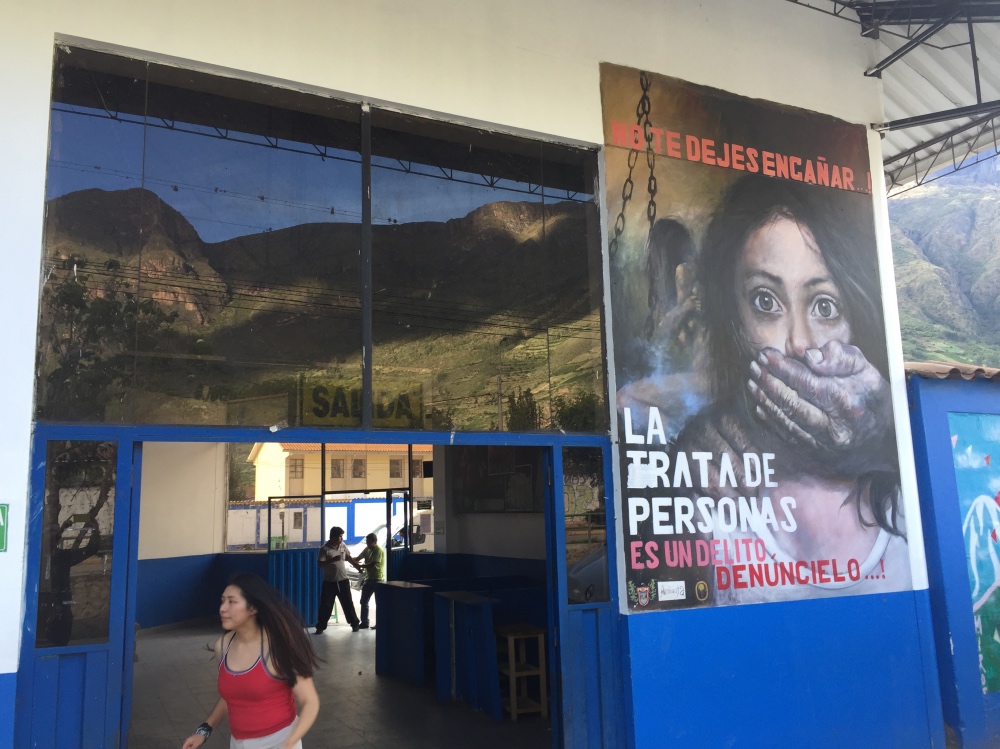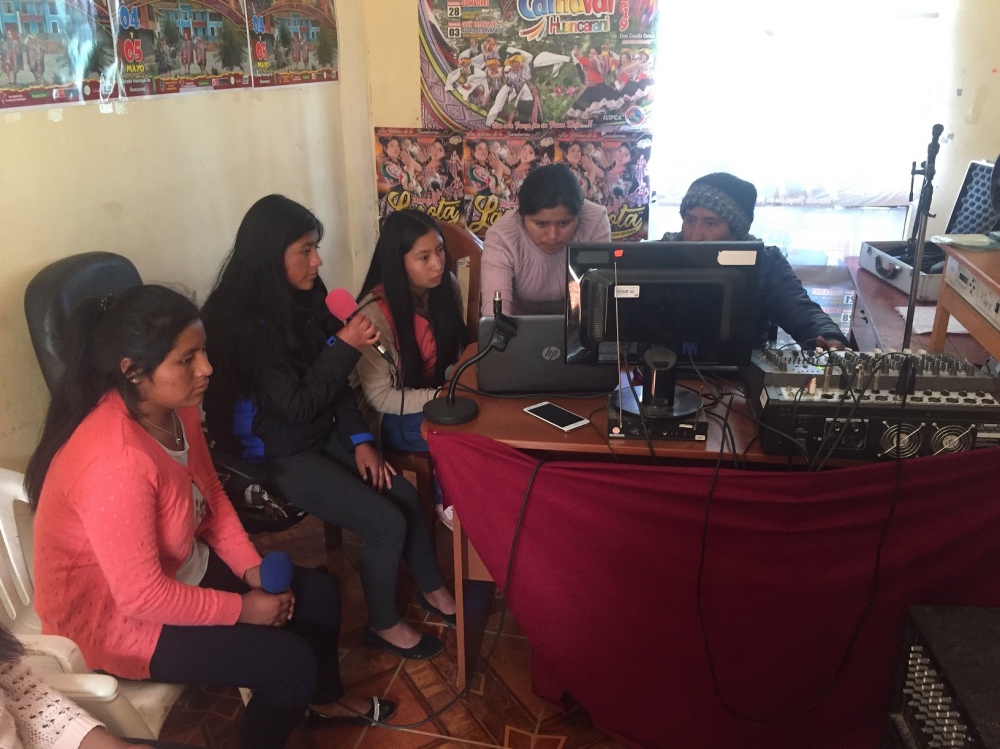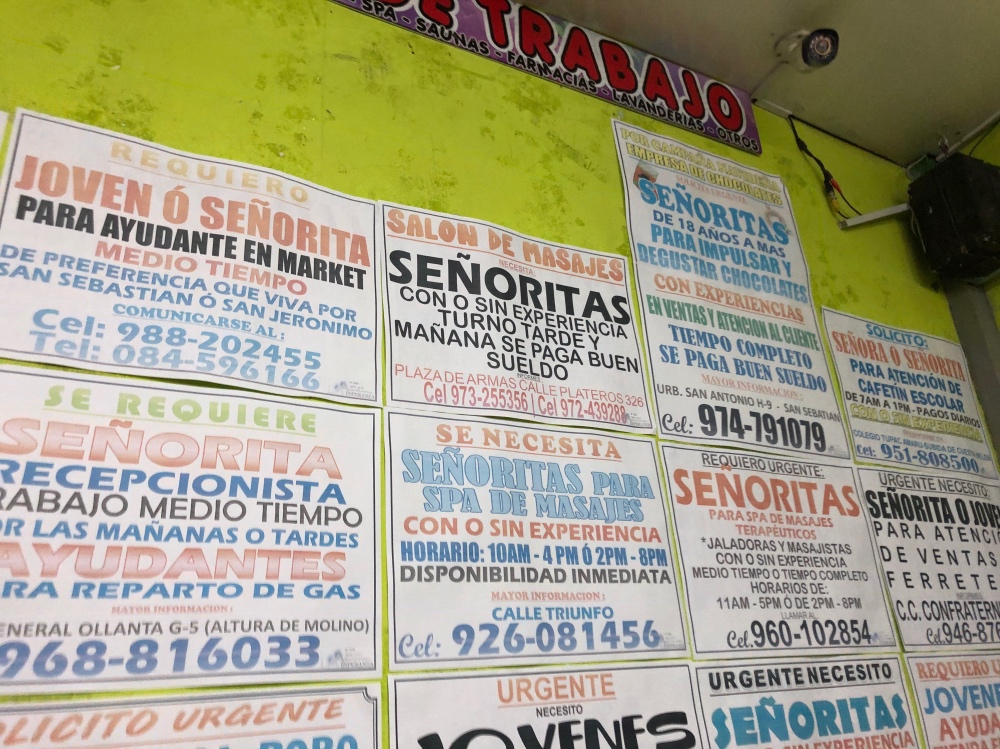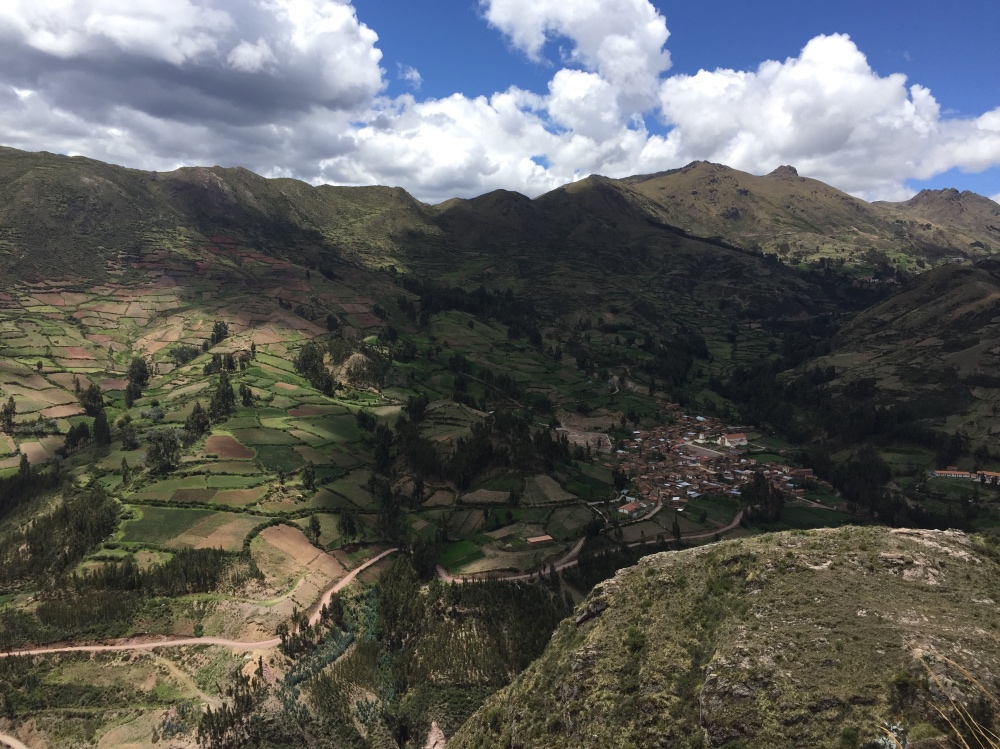
ANASTASIA MOLONEY, of Thomson Reuters Foundation, reports from southern Peru…
Cusco, Peru
Thomson Reuters Foundation
Huddled around a microphone in a village in southern Peru, five teenagers took to the airwaves one Sunday with a stark warning.
“Fellow friends, anyone can be trafficked. It’s happening in our communities,” said 15-year-old Dina Mamani, one of the hosts of a weekly radio show that discusses the threat posed by human traffickers in poor farming villages in the Andean highlands.
“Stay alert, stay informed,” she said on air last month in Huancarani district, reaching 5,000 listeners as she switched freely between Spanish and Quechua spoken by Indigenous people.

A mural outside a bus station warns of the dangers of human trafficking, Calca, Peru. on 1st December, 2019. PICTURE: Thomson Reuters Foundation/Anastasia Moloney
Traffickers target villages around the tourist hotspot of Cusco, taking their victims hundreds of miles away to Peru’s Amazon rainforest region where illegal gold mining is rife.
In the vast jungle area of Madre de Dios, women and girls are sex trafficked in bars and brothels frequented by miners, while men and boys suffer labour abuses in the open-pit mines operating without a license, prosecutors and campaigners say.
“With radio you can disseminate messages to communities who you otherwise can’t reach.”
– Rosario Salazar, joint director of women’s rights group Amhauta.
A military crackdown last year on illegal mines has simply driven operators to new areas and deeper into the forest where authorities and activists fear modern slavery is still widespread but now harder to detect and prevent.
This spells danger for village teenagers, especially during the school holidays from December to February when many students are lured away from home with false job offers promising high wages to work as waitresses, cooks or dancers.
“The highest risk of trafficking is during the holidays when children seek work,” Rosario Salazar, joint director of women’s rights group Amhauta, told the Thomson Reuters Foundation.
Low literacy rates and a lack of internet coverage in the mountaintop villages mean radio is the main source of information – and a vital tool to combat human trafficking.
“With radio you can disseminate messages to communities who you otherwise can’t reach,” said Salazar of Amhauta, which has supported the teenagers’ radio show since its launch in 2014, along with the children’s charity Terre des Hommes.
Living in poverty with parents who struggle to meet ends meet, Indigenous teenagers are obvious targets for traffickers.
Young people are expected to work during the school holidays – some to help pay for textbooks and uniforms, or clothes, shoes and smartphones that their parents cannot afford, others to ensure their mainly farming families can put food on the table.

Teenage girls host the anti-human trafficking radio show, Huancarani district, Peru, on 1st December, 2019. PICTURE: Thomson Reuters Foundation/Anastasia Moloney
At job agencies in the centre of Cusco – where teenagers go during the school holidays to look for work – the walls are lined with adverts ranging from kitchen help to domestic work.
Some offer salaries of up to $560 a month – a far cry from the $70 subsistence farmers growing maize and potatoes can typically expect to earn, and a tell-tale sign that the advert is a trap laid by a trafficker, according to Amhauta.
Nearly 80 per cent of human trafficking cases reported to the police nationwide across Peru in 2017 involved victims being recruited by false job offers, the latest available official data shows.
PREVIOUSLY: SOUTH AMERICA: SEX TRADE FLOURISHES IN PERU’S AMAZON DESPITE CRACKDOWN ON ILLEGAL MINING
Once they arrive at the mining camps and bars, teenage victims tend to be treated well at first. They are paid, fed and provided with new clothes, make-up and a place to stay.
“They don’t even know they are being recruited and don’t see themselves as victims,” said Mercedes Arce, coordinator at the anti-trafficking group CHS Alternativo. “It’s a subtle process.”
But exploitation ensues – forced labour or prostitution – with teenagers stripped of their identity documents, unable to come and go freely, and told they have to repay the cost of their transport, meals and accommodation, she said.
For girls and women, it often starts with washing glasses. Then they are offered the chance to make more money by drinking and dancing with miners, and ultimately having sex with them.

Job offers line the wall of a job agency in Cusco, Peru, on 2nd December, 2019. PICTURE: Thomson Reuters Foundation/Max Baring
On the teenagers’ radio show, which is called ‘Murky Waters: Clear Voices’ and is broadcast from a market hall, 16-year-old Carla Zunilda was next up in a bid to persuade her peers.
“Don’t be fooled by offers of work that pay a lot of money,” she said. “Know the risks. Say no to job offers, keep studying.”
Yet radio is a double-edged sword as it is also used by traffickers to reach more victims with false promises, said Andronika Zans, the anti-trafficking prosecutor for Cusco.
“Don’t be fooled by offers of work that pay a lot of money. Know the risks. Say no to job offers, keep studying.”
– Student Carla Zunilda, speaking on the radio show.
“To catch a victim, traffickers go to a station reaching the most remote communities, farmers, poorest families,” she said.
In Cusco, prosecutors investigated 60 cases of alleged human trafficking in 2019, a decrease from 100 cases in 2017, mainly due to fewer people reporting the crime, the prosecutor said.
Most trafficking cases involve child sexual exploitation, with eight convictions handed down last year, she said.
At a nearby rural school attended by several of the radio show hosts, headteacher Genaro Paucar urged the central government to invest more in agriculture to help farmers produce higher crop yields to stem migration to mining areas.
“What’s worrying is that there are no sources of employment, and so they are almost forced to turn to these places,” he said.

View of Andean highland village near Cusco, southern Peru, on 1st December, 2019. PICTURE: Thomson Reuters Foundation/Anastasia Moloney
Towards the end of the hour-long radio show, Zunilda called upon her peers to report suspected traffickers to the police.
Having been targeted at a market two years ago by a man offering $600 a month to wait tables, she speaks with authority.
“Fellow friends, this isn’t a tale,” she said on air.
“Speak out. Don’t be silent.”





